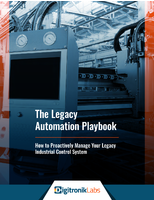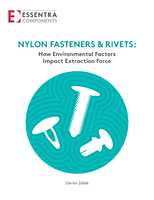Powder Coating With Heraeus -- An Efficient Solution
Heraeus-Designed Powder Curing Process Pays Off for Whitehead Die Cutting
When a gas-fired curing oven for powder-coated castings couldn't keep pace with production, Whitehead Die Casting turned to Heraeus Noblelight for a more efficient solution using electric infrared instead of gas.
Complicating the challenge for Heraeus was the configuration of the castings most often being cured. Each of six powder-coated surfaces, including edges, needed relatively equal exposure to infrared rays heated by the heating units. Most interior oven designs, however, rely on two- dimensional heater placement, which cures faces parallel to the heaters faster than faces perpendicular to the heaters.
Based on results of their laboratory tests, Heraeus engineers designed a 36-foot curing tunnel using a unique "accordion" configuration of heaters. The new curing oven delivered dramatic improvements over the gas oven: Parts per hour doubled. Unit labor costs dropped 30 percent. Rejects due to undercuring or overcuring have been almost eliminated. And early in the new tunnel's operation, maintenance costs appear to be substantially lower.
Bottleneck threatened company's growth
Whitehead Die Casting makes a variety of castings from molten aluminum and adds value through other processes in its 75,000-square foot plant in Gainesville, Georgia.
About half of the company's business focuses on the manufacture of emergency lighting housings for America's leading suppliers of lighting fixtures. The company coats the external facings of the housing components with electrostatically-charged latex powder. High-temperature curing transforms the black or white powder into a smooth, uniform, shiny, scratch-resistant finish. The powder coating and curing process, introduced in 1990 when the company relocated its plant to Gainesville, was Whitehead Die Casting's solution for eliminating solvent fumes that plague wet painting processes.
To cure the powder-coated castings, the company relied on a gas-fired oven. Proper curing meant that operators had to run the conveyor line at the slowest possible speed. In winter months, drafts from opening a bay door in the plant could drop the oven temperature 100 degrees in seconds and ruin an hour's production.
"Our output was so slow, we were forced to add a third shift just for powder coating. So we were running 24 hours a day -- not to keep up with increased business, but to offset slower production," said R.K. Whitehead, president of the company founded by his grandfather almost half a century ago. He recalls a meeting with the company's manufacturing manager to discuss the curing bottleneck. "There are two ways to resolve this," said the manufacturing manager. "We can either increase capacity -- or sell fewer emergency lighting fixtures!"
Both men knew that the latter was not a serious option. They had overseen a doubling of the company's revenue in the last five years. And profits for the last two years had exceeded combined profits of the previous ten years. As the two executives met in November of 1996, they were not about to let a production bottleneck put a lid on the company's growth plans for 1997 and beyond.
An easy decision
A team was formed to find a better curing method -- quickly. The team's discussions with powder coating experts soon confirmed that an electric infrared oven offered a lower overall cost than the gas oven. Investigation of possible suppliers and oven fabricators led to Heraeus.
The first issue crucial to oven design: How to give all faces of the castings equal exposure in the curing oven. Typically, heaters lining the interior walls of an oven cure a casting's parallel surfaces much faster than surfaces passing through the oven perpendicular to the heaters.
"Curing is a function of time and temperature," explains Whitehead. "You want to avoid curing one surface before the other surfaces are cured, or you'll end up with discolorations."
Whitehead Die Casting's production people and application-experienced Heraeus engineers went to work in Heraeus labs. After several tests, they found the optimum solution for curing the emergency lighting fixtures, which are shaped much like the lid of a shoebox. Departing from the design of conventional electrical ovens, Heraeus arranged most heaters vertically along the left and right interior walls of the oven. Additional heaters are installed on the top and bottom interior walls.
"Many manufacturers, we found, cannot supply medium-wave heaters for vertical installation," said Whitehead.
Oven zones give operators flexibility
Other unique aspects of Heraeus's design for Whitehead Die Casting include:
o The accordion-style orientation of the vertical heaters directs radiant heat not only to parallel faces of each casting, but also to leading and trailing perpendicular faces.
o Heraeus designed the oven for optimal curing of the castings and made heat heaters tailored to the oven's dimensions. Some suppliers design their ovens for standard-size heaters.
o Heraeus designed the oven with four controllable curing zones. For each type of casting, operators have a "recipe" of power settings for the four zones.
The ability to rapidly adjust curing temperatures in each zone gives operators the flexibility to quickly change what items are being cured. "Instead of waiting for all units of one type to leave the oven, we can adjust the temperature of each zone as a new casting type enters it," said Lee Moore, department manager of emergency lighting fixtures.
"We don't have to turn the oven on until a few minutes before each shift," he adds. "The gas-fired oven required 45 to 60 minutes to reach curing temperature."
Temperature consistency melts problems away
Another advantage of electric infrared, Moore notes, is temperature consistency. "There are no hot spots in this oven. Temperatures don't fluctuate. I don't have to worry about getting 40 castings that are overcured and then 100 that are undercured because of a downdraft. I don't have to worry about finish problems due to outgassing occurring too quickly. All of those problems have gone away."
Whitehead Die Casting hardly lost a beat in changing over to the new Heraeus oven. The gas oven was shut down at 8 a.m. on a Friday morning. By 7 a.m. Monday morning, the company was in full production with its new oven.
Maintenance? "We haven't lost a lamp yet," Moore said. The life expectancy of a Heraeus heater is 25,000 operating hours -- or about six years of production. In contrast, Whitehead Die Casting spent $15,000 over four years replacing elements of the gas oven.
How important is the new curing process to Whitehead Die Casting? R.K. Whitehead explains: "Even though we think of ourselves as being in the die casting business, the fact that we cure about 300,000 parts a year puts us in the powder coating business, too. That process impacts half of our total revenue. When Heraeus showed us how to double the efficiency of that process, it was a very easy decision to make."
Whitehead commented on Heraeus's performance. "They don't come in pushing a standard solution with hourly consulting fees. Their approach is, 'If you have a problem, we'll help you find the right solution for your application.' That approach is very refreshing."
For more information, visit our website at:
http://www.noblelight.net/




